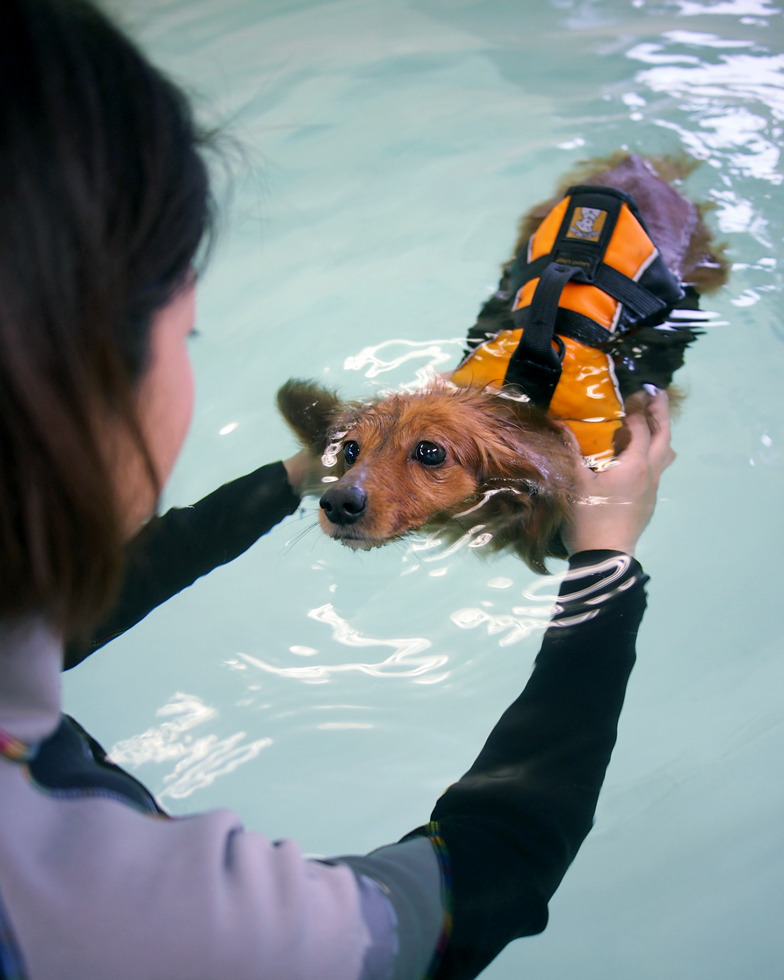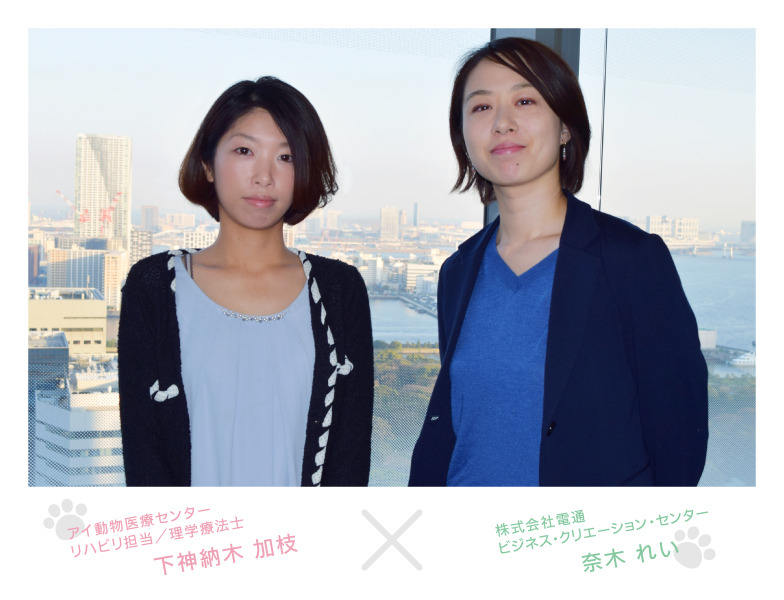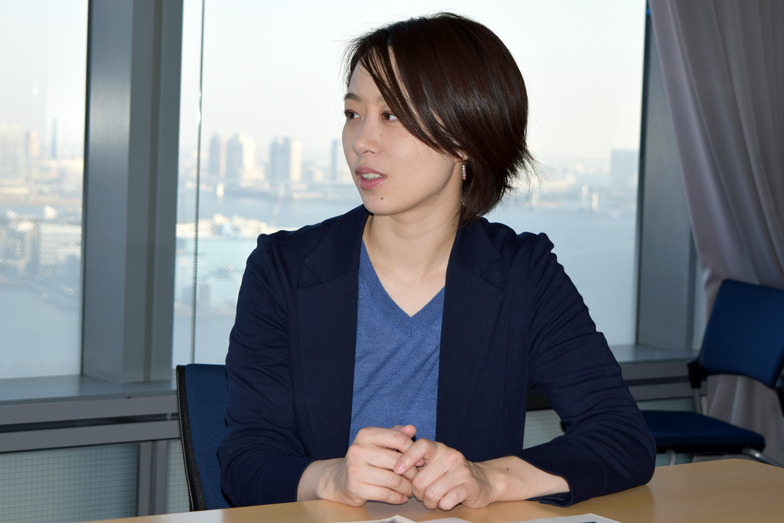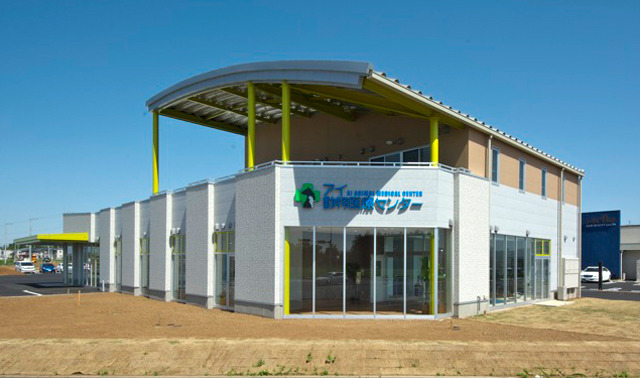Continuing from last time, we have a conversation between Ms. Kagami Nagi, a physical therapist specializing in animal rehabilitation, and Ms. Rei Nagi, a member of the Think Pet Project.
They discussed what physical therapy can contribute to building a society where humans and pets coexist.
What Healthcare Professionals Should Communicate
Nagi: For humans, I think rehabilitation is done under a doctor's diagnosis. But for animals, while post-surgery rehab might be straightforward, determining rehabilitation for dementia seems difficult. After all, isn't it hard to even recognize aging or dementia in the first place? If they slip a bit, you tend to think, "How cute," and when they bark, it's hard for the owner to tell if it's dementia or just a bad mood, right?
Shimokami Nagi: Exactly. In veterinary medicine, rehabilitation is also performed under a veterinarian's diagnosis. Humans have simple tests to screen for dementia, but there are no such standards for animals. I believe veterinary medicine needs to conduct more research to provide clear criteria.
Nagi: Another problem is that owners rarely get the chance to learn this kind of knowledge. If I hadn't been involved with the Think Pet Project, I think I would have lived my whole life completely unaware of the realities of pet aging and physical therapy.
Shimokamigaki: There just aren't many points of contact with this information. Veterinary clinics provide a lot of information, but many owners only visit about once a year.
Dog cafes and dog runs offer chances to learn, but the people who go there are already investing significant time and money in their pets and are generally proactive about gathering information. There are hardly any opportunities for others to casually access this information.
Nagi: In a pet owner survey we conducted previously for the Think Pet Project, we found that owners who actively seek out information themselves and take action only accounted for about 2 out of the 6 total clusters. ( Learn more about the clusters here )
The most proactive were those who actively gathered diverse information on food, health, training, etc., building their own knowledge base, and who also had strong communication skills.
Next in terms of information sensitivity were those with a strong interest in fashion and leisure activities. This doesn't mean other owners are uninterested in information, but it seems many owners only seek information when a problem arises.
I must admit, I myself was not the type of owner who actively sought out information in the past.
Talking with them made me realize that while information on training is increasing, the concept of animal caregiving hasn't really taken hold yet. We need to do more to raise awareness.
Shimonagi: The fact that there are more senior dogs isn't widely known either. There's this feeling that it's just inevitable that things go downhill as they age.
But with a little care, you might be able to spend more time with your precious pet. Instead of leaving them bedridden, they might be able to go for walks until the very end. We healthcare professionals should be the ones conveying these things.
Rehabilitation is Team Medicine
Nagi: You opened a specialized medical facility for rehabilitation this past April, right?

(Top) Rehabilitation-focused medical facility "I Animal Medical Center" (Bottom) Rehabilitation pool
Shimokaminoki: Yes. It's a facility that performs rehabilitation in collaboration with veterinarians, utilizing the same diagnostic equipment as for humans, such as MRI and CT scanners.
Nagi: It's wonderful how treatment and rehabilitation are integrated, just like for humans, meaning the distance between veterinarians and patients is very close.
Shimokamigaki: In human physical therapy, a doctor issues instructions, like "Please conduct walking practice to help the patient walk again," and rehabilitation is performed based on that request. We receive patient information from specialists, verify their current physical function, background, and post-discharge living situation, and sometimes even visit the patient's home before discharge to assess fall risks.
Rehabilitation is fundamentally a team effort. Sharing information among specialists allows us to provide optimal rehabilitation. That's the philosophy at Ai Animal Medical Center – we believe this approach should be applied in veterinary hospitals too.

Rehabilitation in Progress
Nagi: It's precisely because you studied human physical therapy that you truly understand the importance of team-based care, isn't it?
Shimokamigaki: That's right. Also, while it's still in the planning stages, I'd like to set up a dog run and a dog cafe. I want it to be a place where people can bring their pets regardless of whether they need treatment, and where even people without pets can feel welcome to visit.
Nagi: I think that's incredibly important.
Shimokamigaki: If it's a place where people can easily drop by and enjoy activities with their pets, the pets will naturally become more accustomed to it. If we can create a facility deeply rooted in the community, I believe the entire town will become more pet-friendly. That's what we aim for.
Nagi: I believe such initiatives contribute to a society where people and pets coexist harmoniously. It's fascinating that your hospital is taking this approach.
Of course, our team feels this way, but I also think the pet industry as a whole is currently placing high hopes on the various benefits that human-pet coexistence can bring.
However, it's crucial that people don't just increase pet ownership, but actually gain proper knowledge and wisdom. For example, when going to the vet, if they only have sad or painful experiences, it can become traumatic. So, incorporate enjoyable activities too, so they don't develop aversion. From a young age, get them used to short car rides, so they don't get sick from sudden long trips.
Starting to keep a pet can seem very simple, but I believe our responsibility is to help people understand these many small habits and create an environment where both parties can live happily.
<End>














